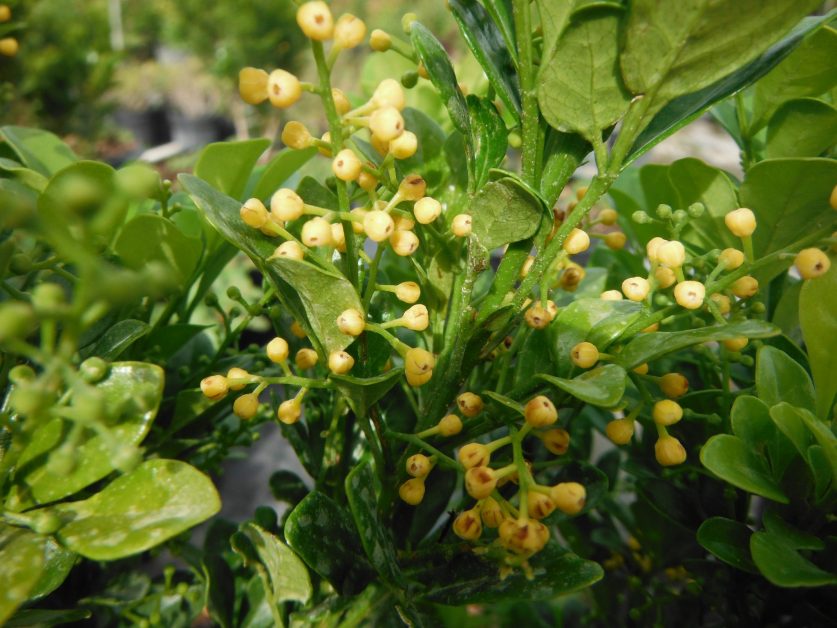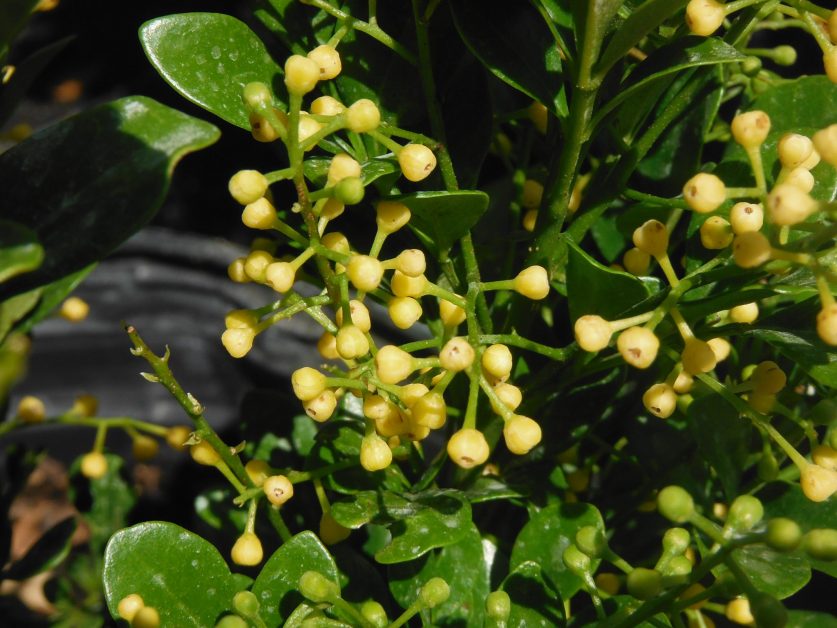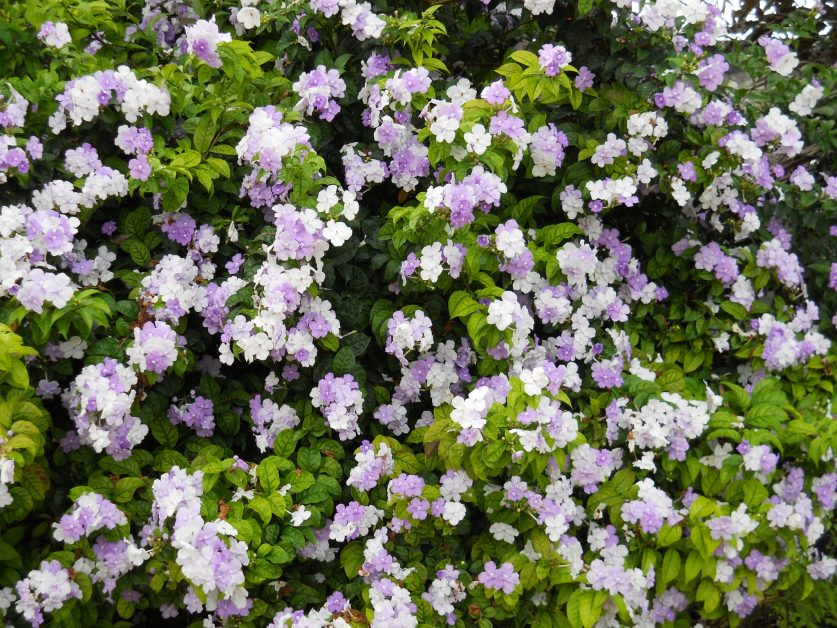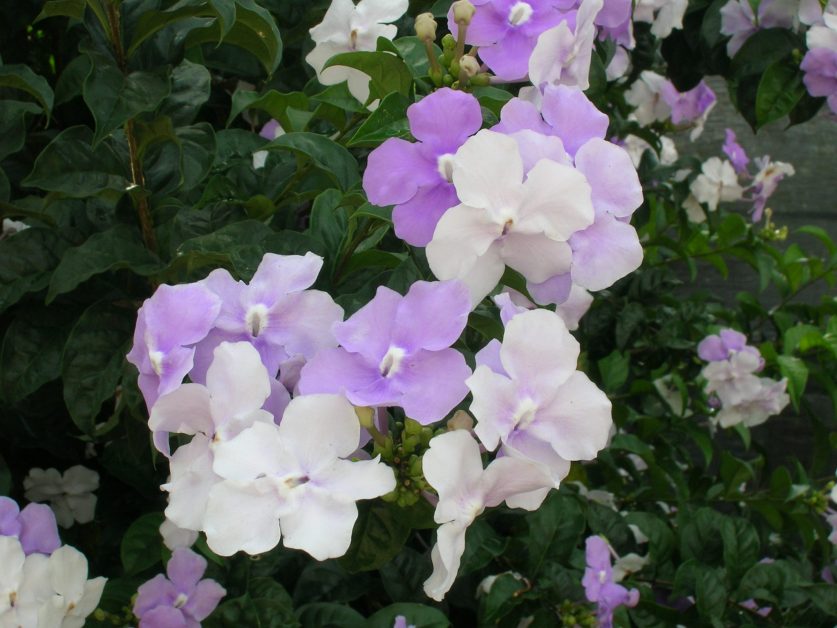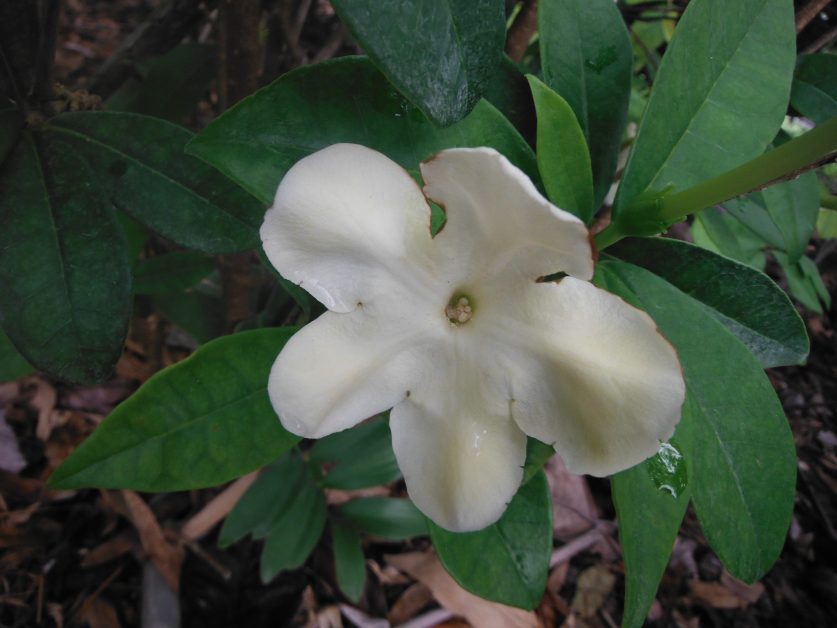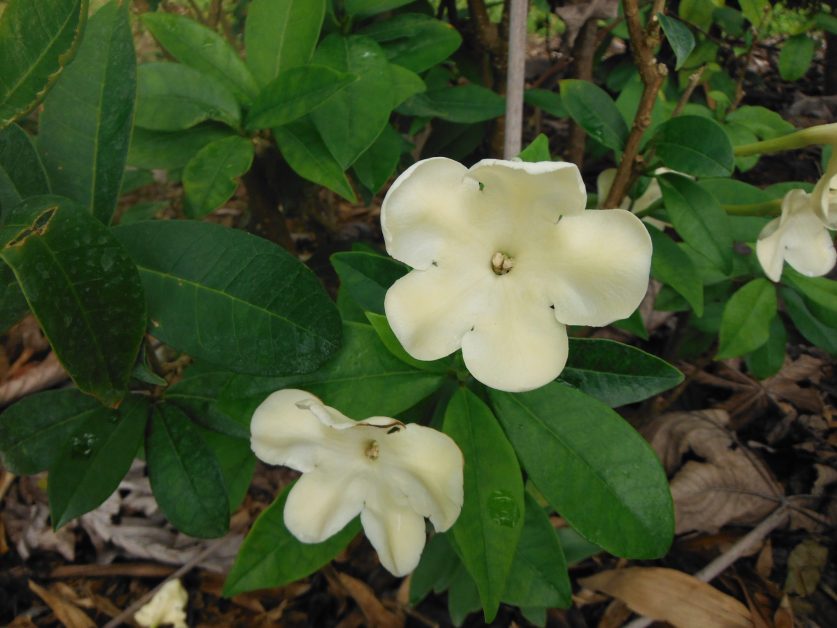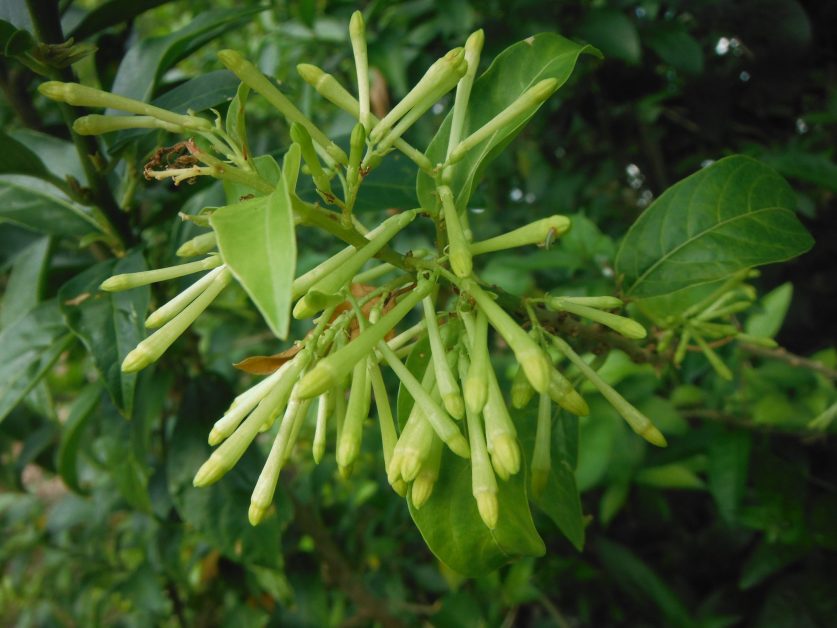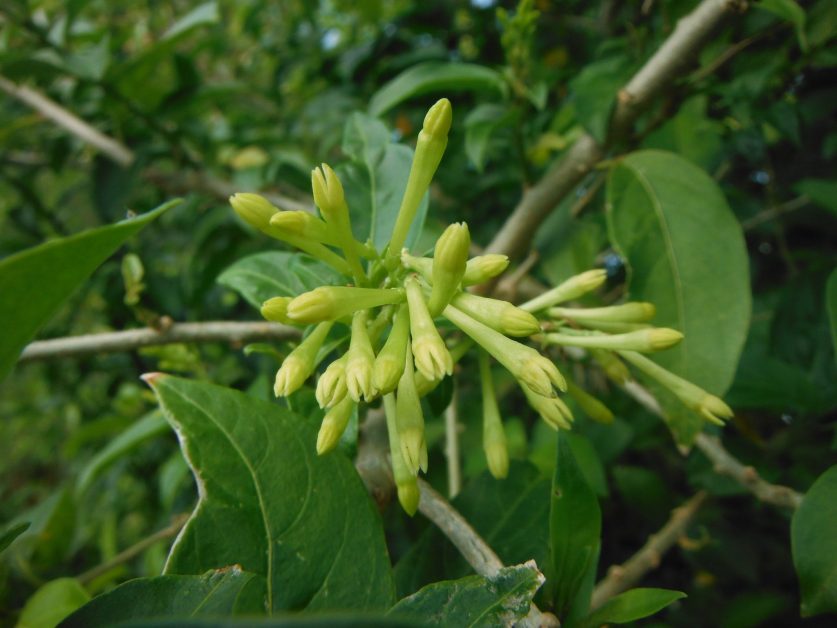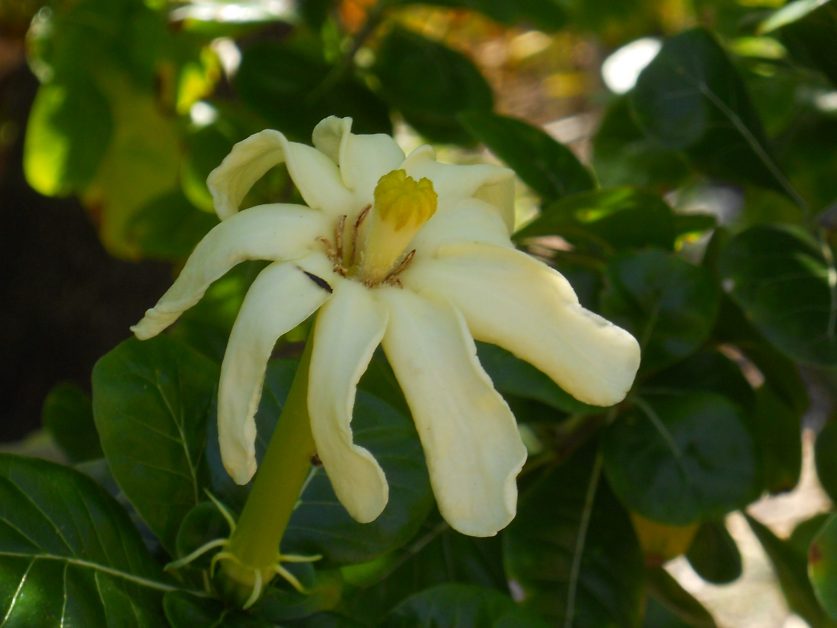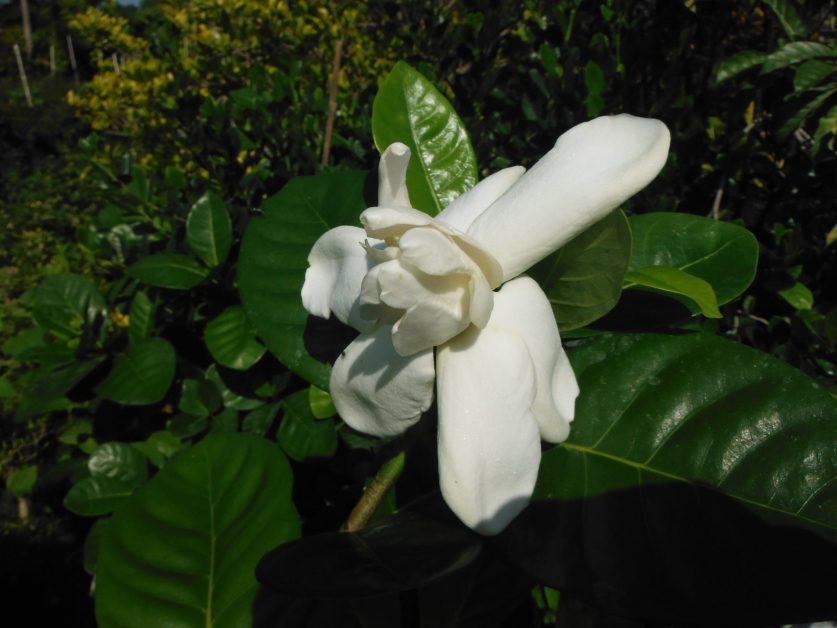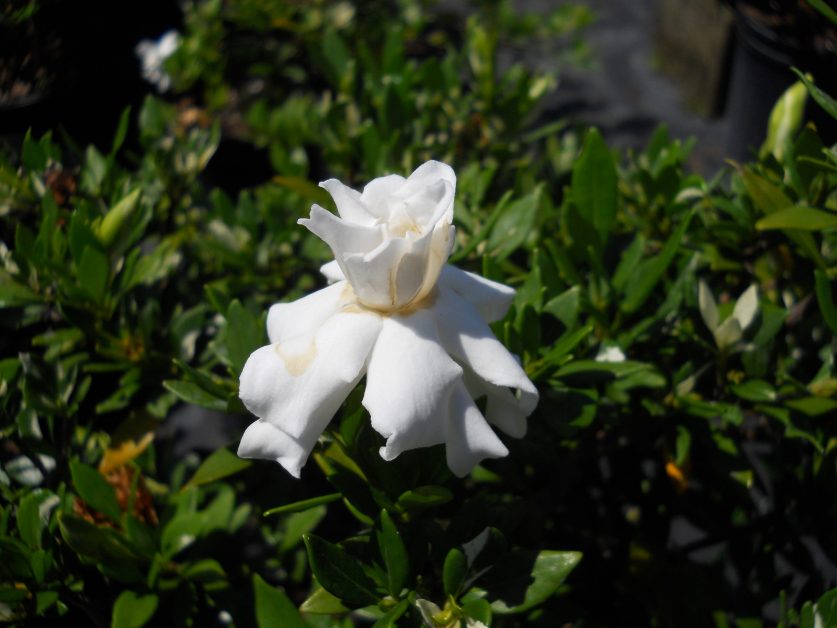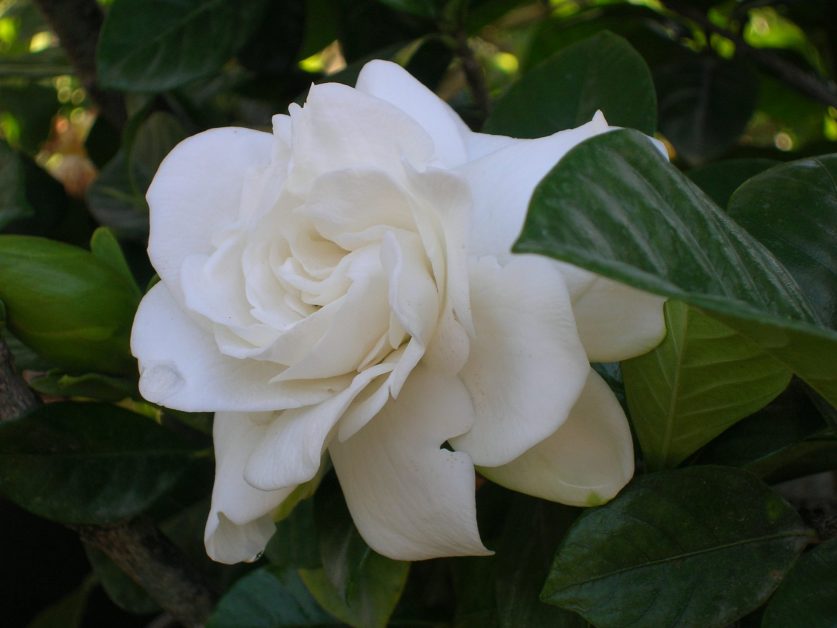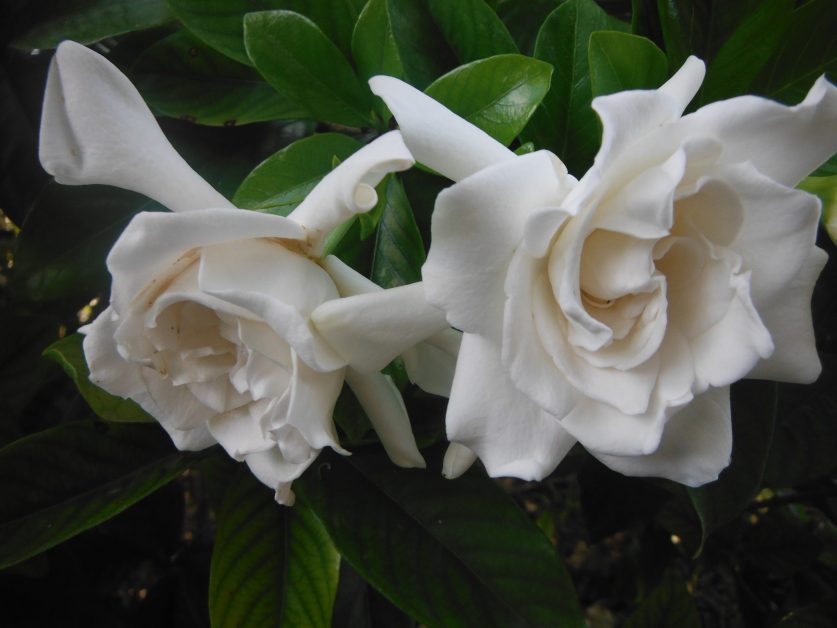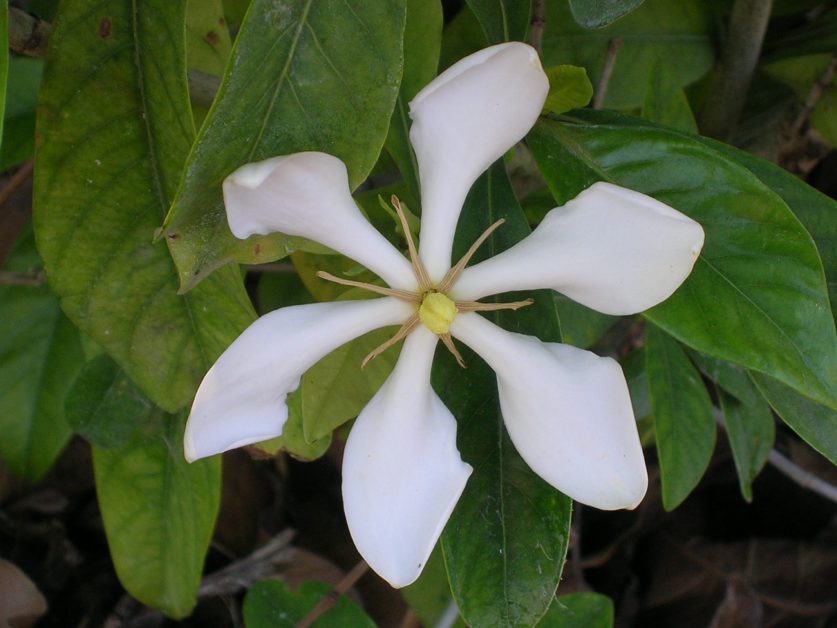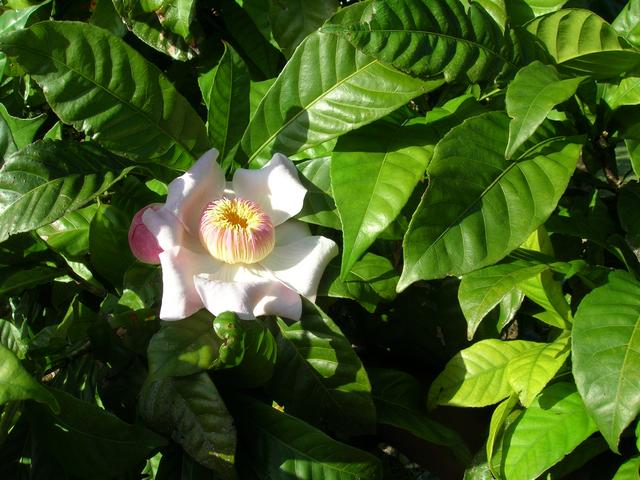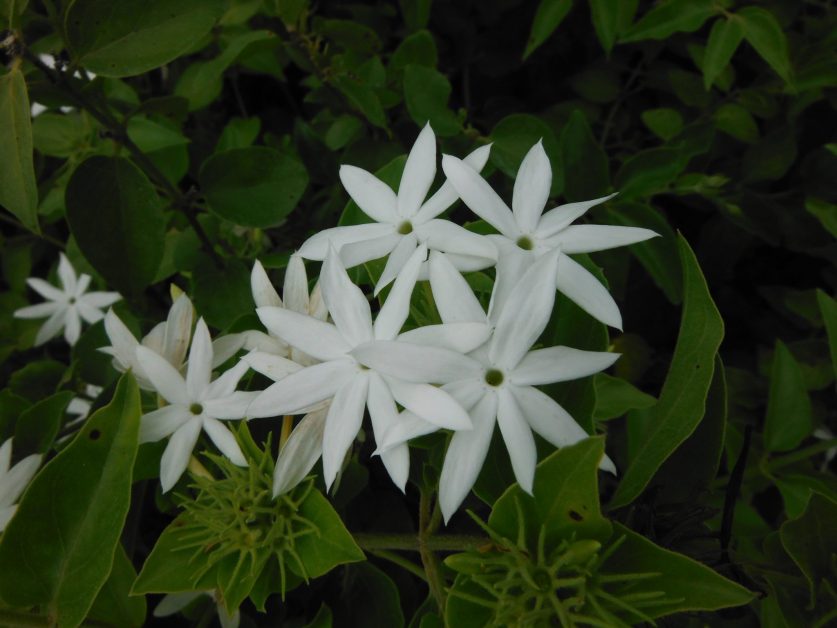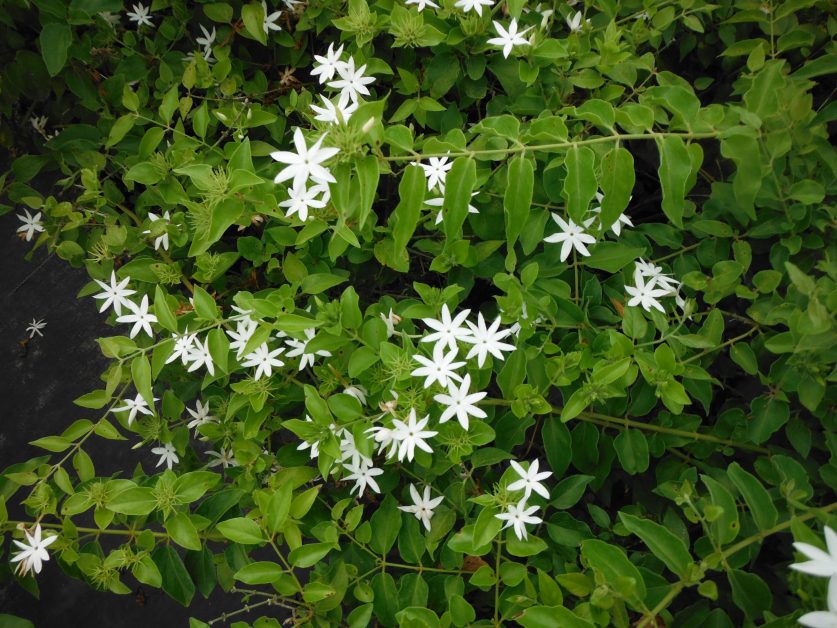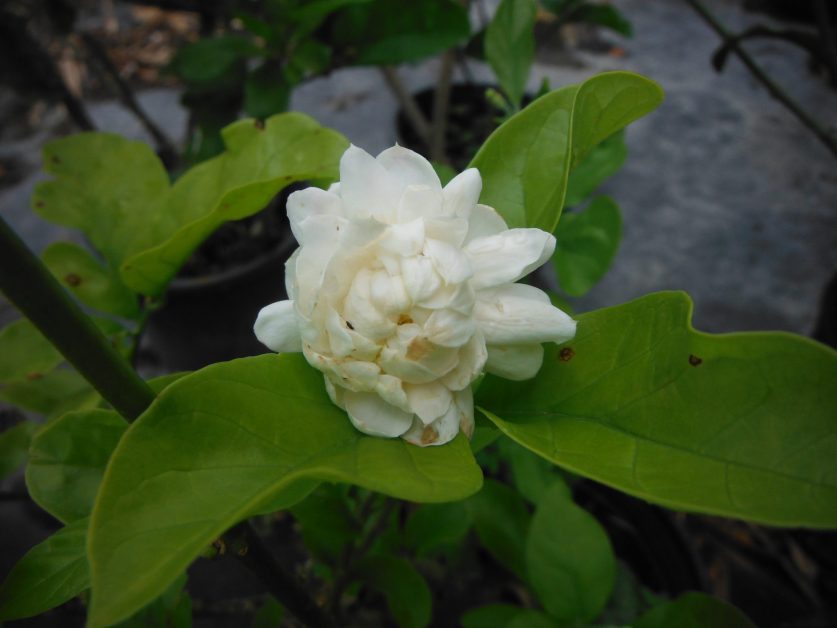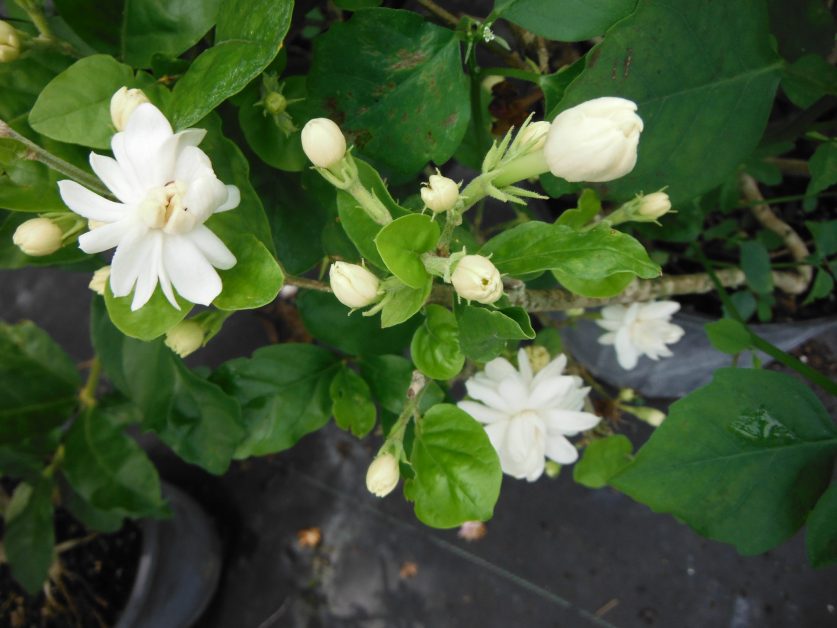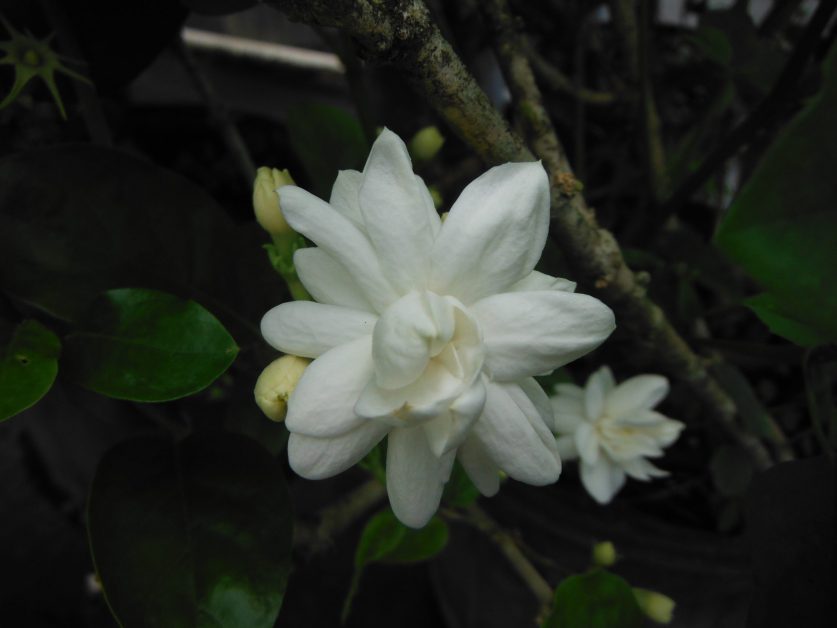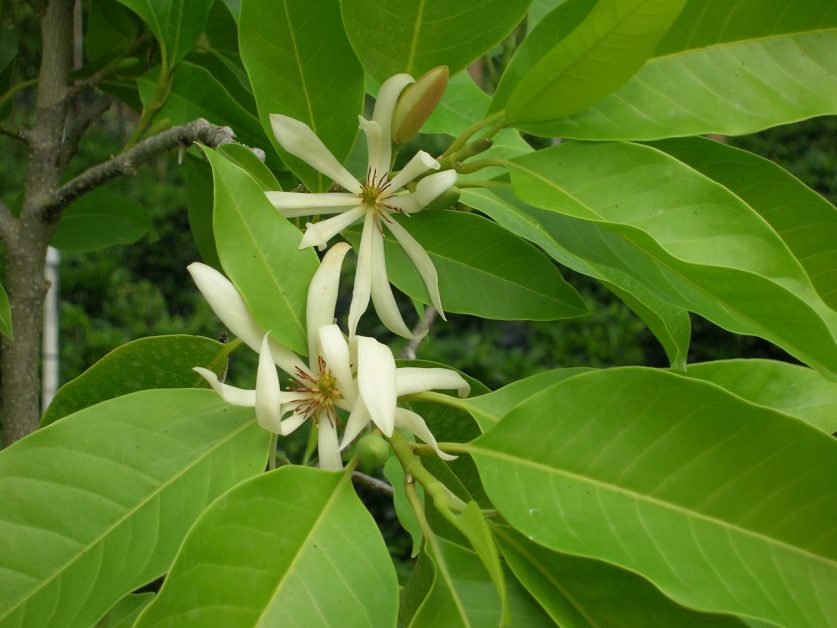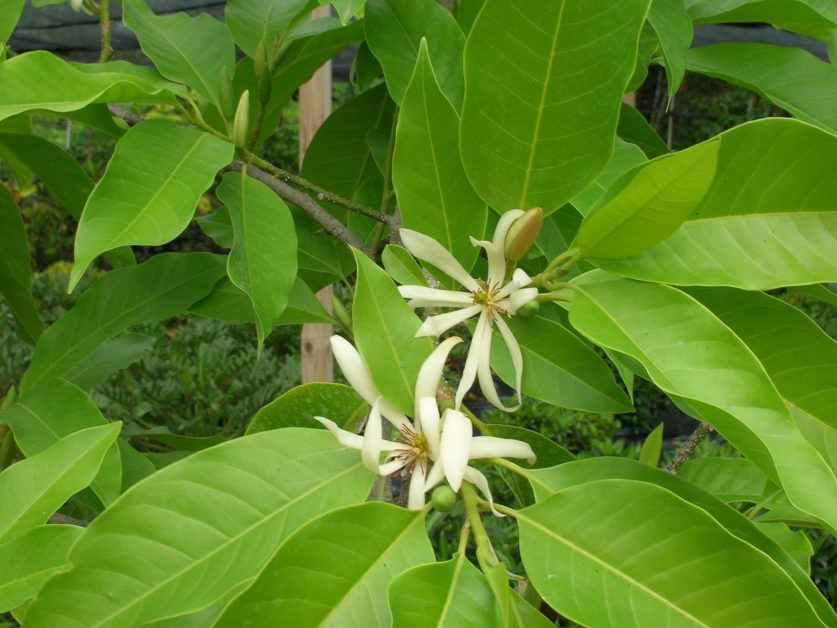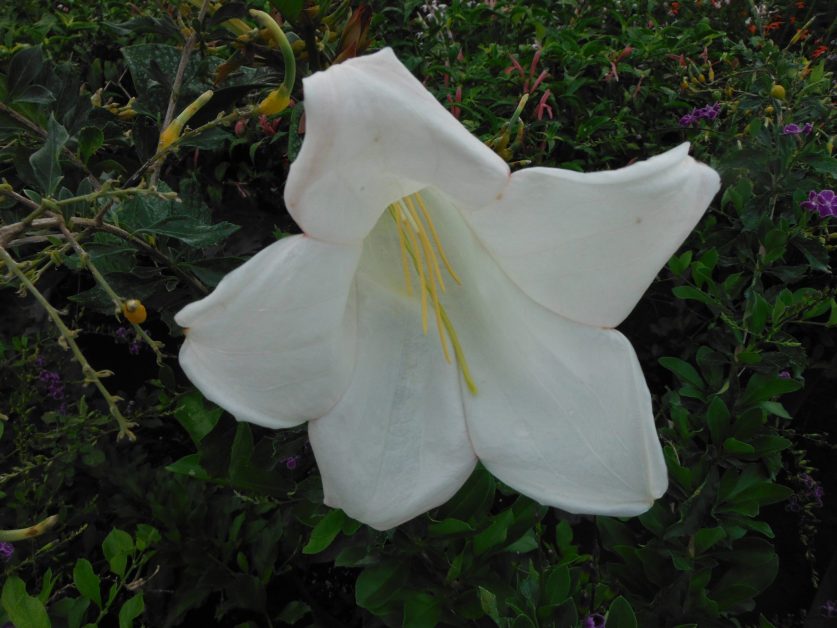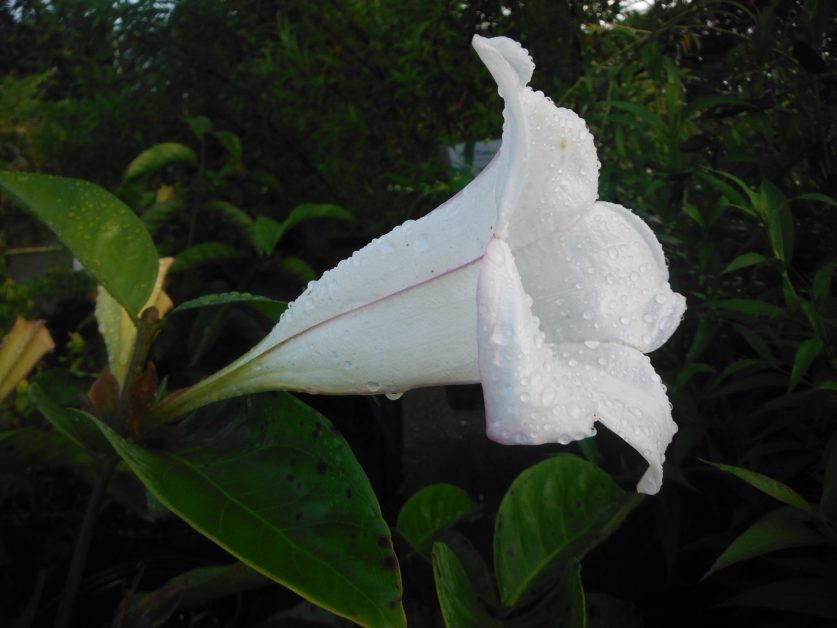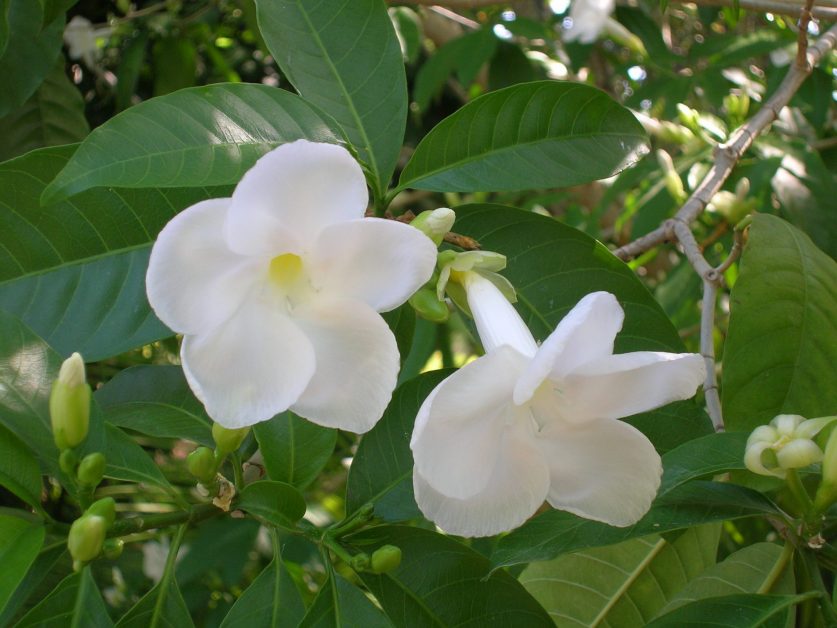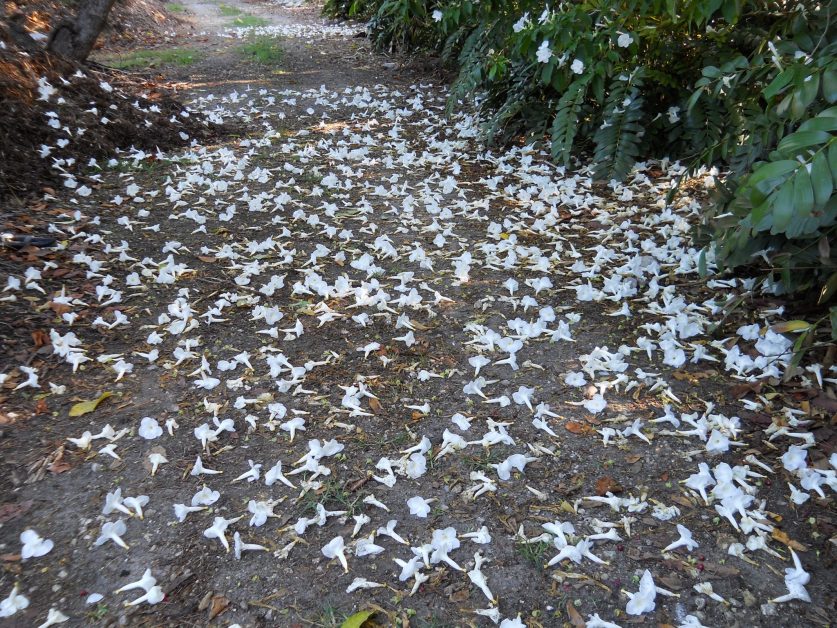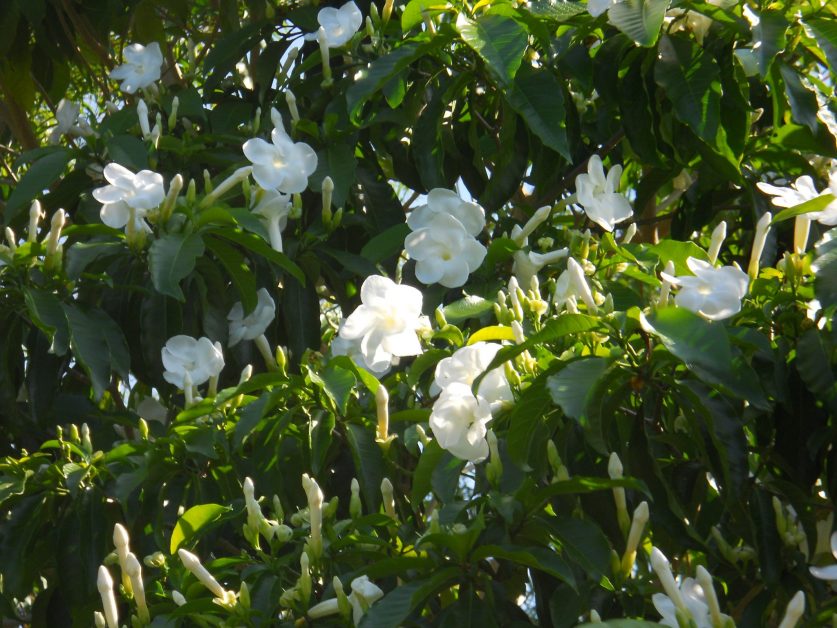Fragrance for Your Yard
One of the many benefits of growing tropical plants is the ability to surround oneself with species that produce a fragrance. With judicious selection, a homeowner can have something sweet-smelling in flower just about year-round and can even satisfy a preference for daytime or nighttime scents.
Following is a survey of some of the fragrant species available at Richard Lyons’ Nursery:
Aglaia odorata – The Chinese Perfume Plant, an Asian native, has a scent that has been described as beguiling. It is a small shrub that can be grown in full sun to partial shade. Maturing to about 15 ft., it bears small yellow flowers that emit their fragrance on and off throughout the day.
Brunfelsia grandiflora – This dry-season blooming shrub is commonly known as Yesterday, Today and Tomorrow, a reference to its flowers’ rapid color changes from purple to lavender to white. Fragrance is strongest after dark. This species, which prefers moist soil and light shade, will reach 7-10 ft. at maturity.
Brunfelsia nitida – Commonly known as Lady of the Night, this shrub, 5-7 ft. at maturity, possesses small, leathery, dark green leaves. In late spring and summer, after dark it exudes an intense fragrance. In fact, its aroma is strong enough that it is best situated at some distance from the house.
Cestrum nocturnum – The Night-Blooming Jessamine is intensely fragrant and, like Brunfelsia nitida, has its best landscape niche when planted away from the house. Plant this shrub in full sun and in a well-drained soil. The plant can be kept compact by pruning the tips. It matures at about 13 ft.
Gardenia – When Americans think of Gardenias, what most of them have in mind is the plant that is ubiquitous in the southern states. But in subtropical Florida there are quite a few species and cultivars that add to the variety of this popular genus:
- G. augusta – Just about as wide, 6-8 ft., as it is tall, this Gardenia species flowers steadily over a fairly long period from mid-spring to early summer, producing a sweet, powerful fragrance. It is best planted in a soil rich in organic matter to lower the soil pH. It has given rise to a number of desirable cultivars.
- G. augusta ‘Viet Nam’ – Reaching 5-6 ft., this cultivar produces single, large, pinwheel-shaped, highly-fragrant flowers which appear intermittently through most of the year. Application of a palm special fertilizer should satisfy its nutritional needs.
- G. jasminoides ‘Aimee’ – This moisture-loving cultivar combines dark green foliage with showy double white flowers which are reputed to be the largest in the genus. It matures to about 8 ft. high, with a spread of about 6 ft.
- G. jasminoides ‘Radicans’ – If you prefer a low, spreading Gardenia, this is the one for you. It grows 1-2 ft. high, but spreads about 4 ft. As with other representatives of the genus, pruning should be done just after flowering. A palm special fertilizer will keep this cultivar looking good.
- G. taitensis – This is the Tahitian Gardenia, quite tolerant of full sun and limestone soils. Featuring glossy, bright green leaves, it matures to 10 ft. Its white flowers are tubular, and its mild fragrance is most prominent at night.
- G. volkensii – The Transvaal Gardenia, native to southern Africa, can reach 20 ft. at maturity. Its single flowers are highly fragrant at night, and its spoon-shaped, glossy green leaves enhance the plant’s appearance by day.
Gustavia augusta – The Heavenly Lotus Tree is native to Brazil. Its large leaves start out a pinkish-bronze color, but mature dark green. Its cup-shaped flowers are large, waxy and white, with colorful sepals. The fragrance, emitted at night, is sweet and heavy. Plant in filtered light and in a soil enriched with organic matter and topped with mulch. Fertilize with a palm special formulation.
Jasminum nitidum – Commonly known as Angelwing Jasmine, this species can function as either a shrub and a vine. It produces white, pinwheel-shaped flower that exude a sweet fragrance at night from late spring through summer. Plants may be heavily-pruned to maintain compactness.
Jasminum sambac – This species, called Arabian Jasmine, can also be grown as either a shrub or vine. The intensely-fragrant flowers, produced year-round in southern Florida, grow in clusters; they age to pink. Plant in full sun to partial shade.
Magnolia champaca – This is the Joy Perfume Tree, an Asian species that reaches 20-25 ft. in height and produces a beautiful scent that can be detected for quite a distance, especially on warm, humid nights. Flowering is heaviest in the spring. Not surprisingly, birds and butterflies are attracted to this species.
Portlandia grandiflora – A species native to Jamaica and Cuba, this small tree produces white, bell-shaped, vanilla-scented flowers about 6 in. long during the spring. It thrives in limestone soils, but should be protected from cold, drying winds. Its attractive l eaves are leathery and dark green.
Stemmadenia litoralis – Commonly known as the Milky Way Tree, or Lechoso, this species is native to Tropical America. Maturing to about 20 ft., it produces fragrant, tubular, white flowers throughout the year. Grow in full sun to partial shade, and provide regular moisture.
- Aglaia odorata (Chinese Perfume Tree)
- Aglaia odorata (Chinese Perfume Tree)
- Brunfelsia grandiflora (Yesterday, Today, and Tomorrow)
- Brunfelsia grandiflora (Yesterday, Today, and Tomorrow)
- Brunfelsia nitida (Lady of the Night)
- Brunfelsia nitida (Lady of the Night)
- Cestrum nocturnum (Nightblooming Jasmine)
- Cestrum nocturnum (Nightblooming Jasmine)
- Gardenia volkensii (Transvaal Gardenia)
- Gardenia taitensis ‘Heaven Scent’ (Double Tahitian Gardenia)
- Gardenia jasminoides ‘Radicans’ (Dwarf Gardenia)
- Gardenia augusta ‘Veitchii Supreme’ (Gardenia)
- Gardenia jasminoides ‘Miami Supreme’ (Gardenia)
- Gardenia augusta ‘Viet Nam’ (Gardenia)
- Gustavia augusta (Heaven Lotus Tree)
- Jasminum pubescens (Star Jasmine)
- Jasminum pubescens (Star Jasmine)
- Jasminum sambac ‘Grand Duke of Tuscany’ (Grand Duke of Tuscany Jasmine)
- Jasminum sambac ‘Grand Duke of Tuscany’ (Grand Duke of Tuscany Jasmine)
- Jasminum sambac ‘Grand Duke of Tuscany’ (Grand Duke of Tuscany Jasmine)
- Michelia champaca (Joy Perfume Tree)
- Michelia champaca (Joy Perfume Tree)
- Portlandia grandiflora (Tree Lily)
- Portlandia grandiflora (Tree Lily)
- Portlandia grandiflora (Tree Lily)
- Stemmadenia litoralis (Milky Way Tree)
- Stemmadenia litoralis (Milky Way Tree)
- Stemmadenia litoralis (Milky Way Tree)
